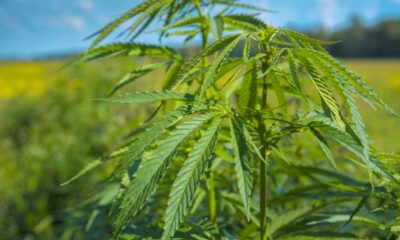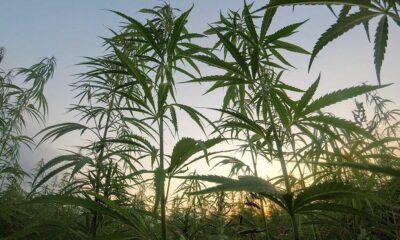Hemp’s Legal Cannabinoids
While THC remains federally illegal, the legalization of hemp has opened up the way to powerful – and legal – cannabinoids.
Although limited in scope and requiring reams of red tape, the U.S. Farm Bill signed into law by President Obama in 2013 contained a relatively well-known but underappreciated provision which lifted federal restrictions on cannabis cultivation – in the form of hemp – in states which had passed equivalent reforms.
Of course, there are all kinds of catches. You have to be in a state that authorizes the activity, which most states still won’t allow. You have to get official permission from a researcher at a university within that state who has an active Internal Review Board (IRB) – difficult to get, sure, but it can be done. The most onerous restriction, in fact, is the bill’s mandate that no cannabis plant grown pursuant to the law produce flowers with greater than 0.3 percent THC.
On the bright side, cannabis resin contains over 80 cannabinoids and over 400 other chemicals in a symphony of organic compounds which all exert a synergistic, therapeutic result through the ensemble effect. Banning THC while authorizing the other cannabinoids may be a senseless and cruel handicap for patients who need complete cannabinoid therapy, but the loss is somewhat akin to that of a well-trained sports team filled with all-star players which loses their top star to injury. It’s a significant loss, but if the rest of the team is truly filled with all-stars, it can excel no matter who may be missing from the roster.
Cannabis resin is made of an all-star team. Even without THC, it can still accomplish some pretty amazing feats. Here’s a list of the top three cannabinoids which can be legally produced within the United States – if you can handle the paperwork.
Cannabidiol (CBD)
Psychoactivity: Mild
Beneficial for diabetes, smoking cessation, epileptic seizures.
Since Sanjay Gupta’s glowing review of the wonder molecule in his documentary “Weed” on CNN, this non-psychoactive yet medically-potent molecule has swept the nation’s hospitals, universities and state capitols in a whiplash reversal of previous policy. In addition to the 23 states which have authorized the medical use of whole-plant cannabis, an additional 13 states have passed laws legalizing only strains high in CBD. Even the U.S. Senate has gotten in on the act with the introduction of the CARERS bill, which would move whole-plant cannabis from Schedule I of the Controlled Substances Act to Schedule II – but de-schedule high-CBD products entirely. With the legalization of CBD becoming such a popular pastime across the nation, the molecule will become popular in years to come.
Tetrahydrocannabivarin (THCV)
Psychoactivity: Very high
Beneficial for ADD/ADHD, depression, neurodegeneration, weight loss.
If you haven’t heard much about THCV yet, you will soon. This wonder molecule may exceed even THC in both its therapeutic value and its ability to get you high. In fact, THCV may be up to four times as psychoactive as THC, according to Rev. Dr. Kymron deCesare, a chemistry professor at the University of California, Davis. Currently, only one popular strain – Durban Poison – has been found to produce significant amounts of this potent cannabinoid, but expert breeders are even now hard at work crossing together new strains of cannabis which can produce THCV in even greater amounts.
In its therapeutic effects, THCV alternates between the mirror of and the opposite of THC. While it resembles THC in its ability to treat depression and neurodegenerative diseases, in other regards it has the opposite effect of its better-known cousin. For example, while THC is known to encourage a more non-linear, free flow of ideas, THCV can apparently help patients focus more clearly on the task at hand – suggesting that it could be a powerful treatment for ADD and ADHD. Even more extraordinary, whereas THC is famous for causing “the munchies,” THCV is a powerful appetite suppressant.
Cannabigerolic Acid (CBGa)
Psychoactivity: None
Beneficial for relief of pain and inflammation, synthesizing other cannabinoids.
CBGa, potentially the most versatile of all the cannabinoids, has been described as the “stem cell cannabinoid” because it’s the prototypical phytocannabinoid from which THC, CBD and all others are derived. All cannabis plants produce CBGa as a precursor to other cannabinoids, but the kinds of industrial strains legalized by the 2013 Farm Bill have been known to produce CBGa’s decarboxylated analogue, CBG, in elevated amounts. That could mean that legal U.S. hemp could be bursting with CBGa.
The best thing about that is that CBGa, once produced by a cannabis plant, can seemingly be triggered to transform into any other cannabinoid under the right conditions. Through the plant’s maturation process, CBGa morphs into THCa, CBDa, CBCa and CBG, thus forming the building blocks of all the other cannabinoids. Researchers may soon discover, therefore, that the federal ban on THC is entirely pointless, given that newly legalized “hemp” already produces all the ingredients an enterprising scientist could need to whip up any cannabinoid they can imagine.
Originally published in issue 16 of Cannabis Now. LEARN MORE.


























